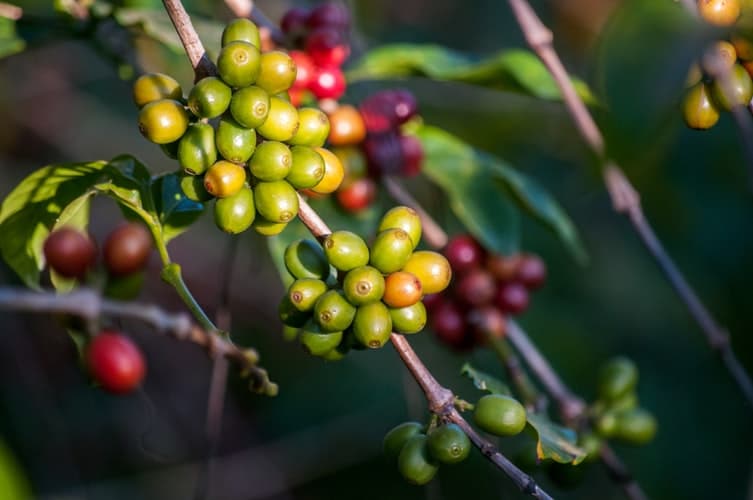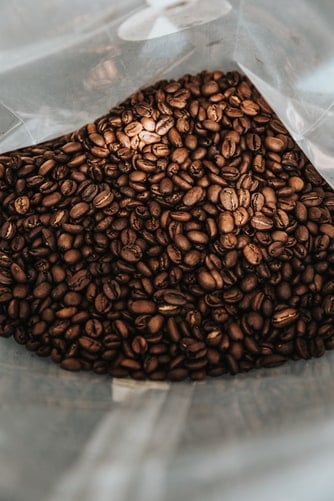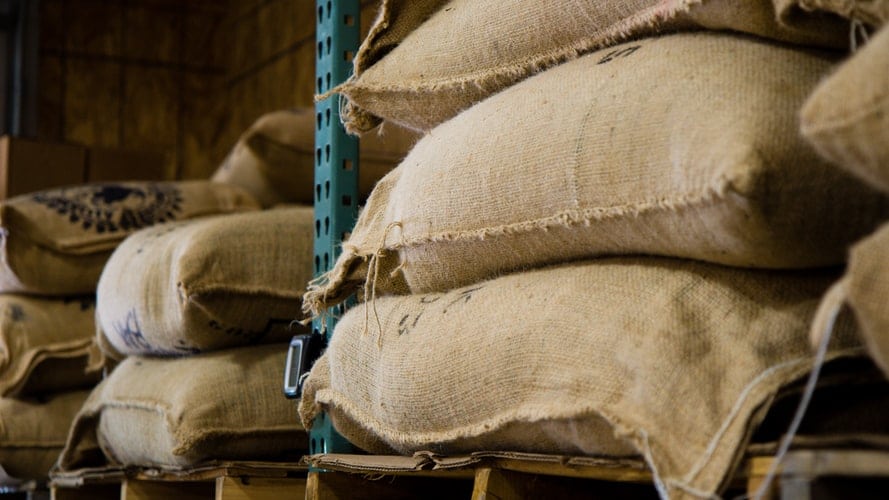Today I want to tell you about the difficult and flowery path that coffee traveled before it gained worldwide popularity and became a part of our everyday life. Throughout its history, people ate it, took it as medicine, prepared tinctures from it, banned it, blessed it and secretly exported it to other countries, monarchs even gifted it to each other.
The history of coffee is replete with dates and geographical names. I will provide a brief overview of where do coffee beans come from until the 19th century, and I will dilute my story with interesting facts collected from various sources.
Origins
It is reliably known that the tradition of consuming coffee as a drink appeared in southern Ethiopia and Yemen, although historians argue about where it happened before.
Shepherd Kaldi and his goats

According to legend, the shepherd Kaldi from the province of Kaffa in southern Ethiopia (according to one version, the word “coffee” comes from the name of the province) noticed that after eating coffee berries, his goats became active and refused to sleep at night.
He tasted the berries and discovered their tonic effect. About his observations, Caldi reported to the abbot of the local monastery, but the abbot condemned the shepherd and threw the berries into the fire. The room was filled with the seductive aroma of roasted best coffee beans, and the abbot decided to make a drink from the berries.
After drinking it, he felt a noticeable surge of strength, which allowed him to stay awake during hours of evening prayer. The abbot told the other monks of the monastery about the discovery, and they carried the knowledge further.
Coffee in the Arab world
Gradually, coffee became known in the south of the Arabian Peninsula, in the territory of modern Yemen. It was here that coffee was first grown for commercial purposes. Thanks to close trade relations between the Arab countries, coffee was already known in Persia, Egypt, Syria, and Turkey by the 16th century.
The popularity of coffee in the Arab world is probably because the use of alcohol is prohibited by the Quran, and coffee became a kind of substitute for it.
Istanbul Coffee Shop, 19th Century
In Turkey, people drank coffee not only at home but also in coffee houses, which were widely used in many cities in the Middle East. Here, the locals gathered not so much to drink coffee but to discuss matters, listen to music and play chess. It was common for the conversation to become heated discussions on political topics.
The authorities were not very enthusiastic about this. They saw in coffee houses a threat, a source of rebellious thoughts. So, under the guise of the fact that coffee is the same intoxicating agent as wine, and therefore subject to a ban, the Mecca authorities closed all coffee houses in the city in 1511, but soon the decision was annulled by a higher authority – the Sultan of Cairo.
Coffee Shop in the Ottoman Empire
This duality about coffee has been seen for several decades. Coffee and coffee houses now and then fell under the ban until the authorities found a compromise option: to allow the use of this drink, but to tax it.
In some cities in the Middle East, coffee was still banned for many years, and in the Ottoman Empire, for example, it was considered so necessary that a woman had the right to file for divorce if her husband did not provide her with an adequate supply of coffee.
Monopoly

For the Arab countries, coffee gradually became an important export commodity, and they did everything possible to prevent other countries from being able to grow it. Before exporting the beans, they were boiled in boiling water or partially fried so that they could not later germinate, and foreigners were strictly forbidden to visit coffee plantations. However, all these measures were in vain.
The first case of coffee smuggling took place in the 17th century when a pilgrim named Baba Budan managed to smuggle several coffee beans from Mecca to his native India. So in the state of Mizoram in India, the first coffee plantation appeared. By the end of the 17th century, the Dutch brought coffee to the Malabar coast of India, and then to the island of Java (Indonesia). From here he subsequently made waves into other countries of Southeast Asia.
Coffee penetrates Europe
The Dutch colonies rapidly became the main suppliers of coffee to Europe, where coffee was experiencing increasing popularity. In addition to the Dutch colonies, this product penetrated Europe and through the Ottoman Empire.
In the Old World, the attitude to coffee was negative. Opponents called it “the bitter offspring of Satan.” In Venice, disputes between supporters and opponents of coffee reached such an intensity that the intervention of Pope Clement VIII was required. However, the Pope liked the drink so much that he gave them his blessing.
The first coffee houses appeared in Europe in the middle of the 17th century and quickly spread to England, France, Germany, and the Netherlands. Soon there were about 300 coffee houses in London. As in the Middle East, coffee houses were a popular meeting place, where representatives of various professions gathered to discuss urgent matters and problems. They united in interest groups, debated, and made deals.
Discussion of the Franco-Prussian War in a Paris coffee shop
Coffee houses have become such an important place for information exchange and business communication that some of them later grew into large companies. So, the well-known insurance market Lloyd’s of London originated based on the coffee house of Edward Lloyd on Tower Street, and the London Stock Exchange grew from the coffee house Jonathon’s Coffee House.
Coffee in the New World

The Dutch brought coffee to New Amsterdam (now New York) in the mid-17th century. Coffee began to gain popularity, and coffee shops began to appear in other major cities – such as Philadelphia and Boston.
However, until the second half of the 18th century, tea remained the favorite drink of Americans. The turning point in spreading the culture of coffee consumption was the 1773 Boston Tea Party when the colony rebelled against yet another increase in tea tax by the English King George. The Americans refused tea in favor of coffee, which became the national drink of the United States.
Boston Tea Party
By the way, the rebellion itself, which went down in history as the Boston tea party, was also planned by the rebels in the coffee house – in the Green Dragon in Boston. It is also interesting that some New York coffee shops, as well as London ones, have become the cradle of large corporations. Thus, the New York Stock Exchange and Bank of New York originate from ordinary coffee shops on the street, which today is called Wall Street.
Caribbean and Central America
Gabrielle Clejo takes care of a coffee tree on the way to Martinique
The story of coffee entering the Caribbean is one of the most romantic in a long coffee journey around the world. In 1714, the mayor of Amsterdam presented a coffee tree as a gift to the French King Louis XV. The King ordered to plant a tree in his botanical garden in Paris. In 1723, the French naval officer Gabriel de Clieuud from Martinique was in Paris and was able to get a coffee plant from the Royal Botanic Garden. His goal was to plant a tree in Martinique. Putting it under a glass cover to protect it from seawater and adverse weather, he hit the road.
Records from the officer’s diary detailed that the coffee tree overcame a lot of trouble before reaching the island. The ship was threatened by pirates, fell into a storm, and the envious colleague de Clieuu even attempted to attack the plant itself, and, as a result of the attack, managed to tear a twig from the tree. However, it seemed that nothing could prevent the journey of coffee to Martinique. It is believed that 18 million coffee trees that grow on the island today come from this single tree. From here, coffee spread to Jamaica and then moved into Central America.
South America
The Dutch brought coffee to South America. In 1718, the first plantations appeared in Suriname, and then in Guyana.
The history of coffee introduction into Brazil, which is today the largest coffee producer in the world, is also very curious.
By the beginning of the 18th century, the Dutch imported coffee from Java. The British were importing from India, and the French were about to start getting coffee from their colonies in the Caribbean. Portugal, realizing its backlog, was looking for opportunities to enter the game. After all, the coffee trade promised great revenues to the treasury.
Lt. Col. Francisco de Mello Palet
Brazil was chosen as the site for future plantations. The viceroy of the Portuguese King in Brazil, Vasco Fernandez Caesar de Meneses, sent Colonel Francisco de Mello Palet to neighboring Guyana, where the Dutch were already growing coffee, with the mission to get beans or plants at all costs.
They say that the Lieutenant Colonel at first simply asked the governor of Guyana to share valuable landings, but he flatly refused. Then de Mello Palet used his charm to impress the governor’s wife and seek her help. Allegedly resigned to the failure of his mission, de Mello Palet was preparing to leave. In farewell, he received from the governor’s wife a large bouquet, where he found a stash of enough coffee beans to usher in the multibillion-dollar coffee industry in Brazil.
Conclusion
The rest, as they say, is history.
By 1820, world coffee production reached 90 thousand tons, with Brazil accounting for 50% of this volume. The wide distribution of coffee around the world, as well as the dismantling of the monopoly system, has led to increased competition in the world market and lower prices. These factors, in turn, led to a real boom in coffee consumption, a further increase in production and the development of channels for delivering coffee to consumers. So, in short, coffee has become a habitual and favorite drink for us.
Optional:
History of Mocha (Mocha, Mokka)
It can be safely stated that in the history of coffee there is no louder geographical name than Mocha (one of the options for the name of this port is Mokha, it is most often used from the Middle Ages to the present day). This small Yemeni port on the Red Sea gave the name to the coffee variety produced in Arabia.
Until the end of the 17th Century, the world as a whole (albeit limitedly) received coffee only from Yemen. It was the illustrious Mocha (Mocha or Mokka). Until the middle of the 17th Century, Turkish and Egyptian merchants came to Yemen and received the best beans. They bought the crop directly from the trees, ensured its collection and seed treatment. Coffee was prepared by the dry method, i.e., dried in the sun.
The Arabs were extremely proud of the new drink and kept the process of its preparation secret. The prohibited the export of beans from the country if they were not dried. This measure was aimed at ensuring that not a single seed capable of sprouting fell into the hands of strangers who, of course, were forbidden to visit coffee plantations. Nevertheless, one can guess that it was very difficult to maintain full control. Arabia was always visited by many pilgrims who came to Mecca from afar, and a wonderful drink one day would inevitably become known to everyone. This happened around 1650 when a Muslim pilgrim named Baba Budan managed to get seven green coffee beans and secretly take them to the Chikma-galhur district in southern India. From these seeds, excellent coffee trees grew, which laid the foundation for the production of coffee in this country.
Countless attempts by the Portuguese, Dutch, French, Venetians, and Spaniards to steal seeds from the Arabs failed. Finally, in 1690, the Dutch managed to get a few sprouts of a coffee tree, which were carefully grown in the botanical gardens of Amsterdam. From there, in 1699, coffee trees were delivered to Dutch colonies on the islands of Java and Sumatra. In a tropical climate, the trees grew well. A few years later, the colonies became the main supplier of coffee in Europe, which is the main merit of the Dutch East India Company founded in 1602. Amsterdam soon became not only a spice trading center but also a world coffee trading center. Experienced traders, the Dutch artificially maintained monopolistically high prices for a variety of spices, including coffee. Without any hesitation, they burned up accumulated stocks of spices for the sole purpose of keeping prices as high as possible.
Residents of Dutch cities quickly appreciated coffee, but, unlike strangers, preferred to drink it mainly at home. Proud of their nimbleness and high profits from the sale of coffee, they even showed a rare indulgence to their old rivals – the French. In 1714, the mayor of Amsterdam, Nicholas Witson, presented a one and a half meter coffee tree to Louis XIV. By this time, the King of the Sun was already well acquainted with the merits of the new drink, which was consumed throughout his yard. They even say that the idea of sweetening coffee with sugar came to the head of one of his many mistresses (this idea is not new: at the beginning of the 15th century the Egyptians already drank coffee with sugar).
Interesting Facts About Coffee Trees
Let’s take a look at the most interesting coffee facts:
Today there are more than 50 types of coffee in the world, but they all come from two varieties: Arabica coffee and African Robusta. Other options are the results of the selection. Coffee trees can reach a height of 10 meters. For the convenience of harvesting, tree crowns form up to 3 meters. The life span of a tree is up to 70 years. One tree per year produces less than a kilogram of coffee beans. Very susceptible to weather and climate, a coffee tree can grow only in a narrow geographical area. Natural plantations make up no more than 20% of the total area; everything else was created by human hands.
In Ethiopia, coffee is considered a national treasure. This is the only place in the world where coffee trees grow as they did many centuries ago: in natural conditions, without any human intervention.
Brazil is one of the main exporters of coffee. The country’s economy is largely dependent on the coffee bean crop, and plantation is given great importance. In São Paulo, a coffee tree has a monument dedicated to it.
Traditions of different countries
Coffee cultures of the West and the East are strikingly different. Interesting facts about coffee and a few examples will help to understand the attitude of different peoples towards the drink.
Ethiopia
The ritual of making coffee is carried out by the owner of the house. The drink is served first to the oldest of those present, as a sign of respect. A guest’s refusal of coffee is perceived as a mortal insult.
Ecuador
Very strong coffee with sugar is brewed here and this mixture is placed in the refrigerator. If you want to drink a cup of a drink, water is heated, a cold mixture is added to boiling water, according to individual taste.
Vietnam
Robusta ice coffee is very popular here. A strong drink is cooled and drunk in small portions.
Syria
Coffee appeared in Damascus in 1530. Westerners will find traditional Syrian brewing most unusual. A brew called “devilish” by the Europeans. A thick black liquid will glisten at the bottom of the tiny cup. You can’t drink it, just try it in microscopic doses so as not to burn your tongue. Syrians consider this drink a powerful homeopathic remedy for many diseases.
Turkey
For centuries, coffee has been considered one of the symbols of the country. Some traditions have survived to this day. Before their wedding, a bride brews coffee for the groom’s parents. If they praise the drink, it means that the son made a good choice.
Greece
It is traditional for women to treat men to freshly brewed coffee in budding relationships. If the coffee is excellent, with thick foam, then this is a sign of happy times to come. Conversely, a foam-free drink means rejection.
Saudi Arabia
In public places, a woman is allowed to drink coffee only with her spouse or close relative. If she accepts an invitation from a stranger to drink a cup of coffee in a cafe, she will face arrest and imprisonment.
Japan
On October 1, the coffee day is celebrated here. This country is one of the first in terms of the number of vending machines with coffee drinks. Those who wish can take canned coffee with them – the Japanese came up with such a method in 1960.
